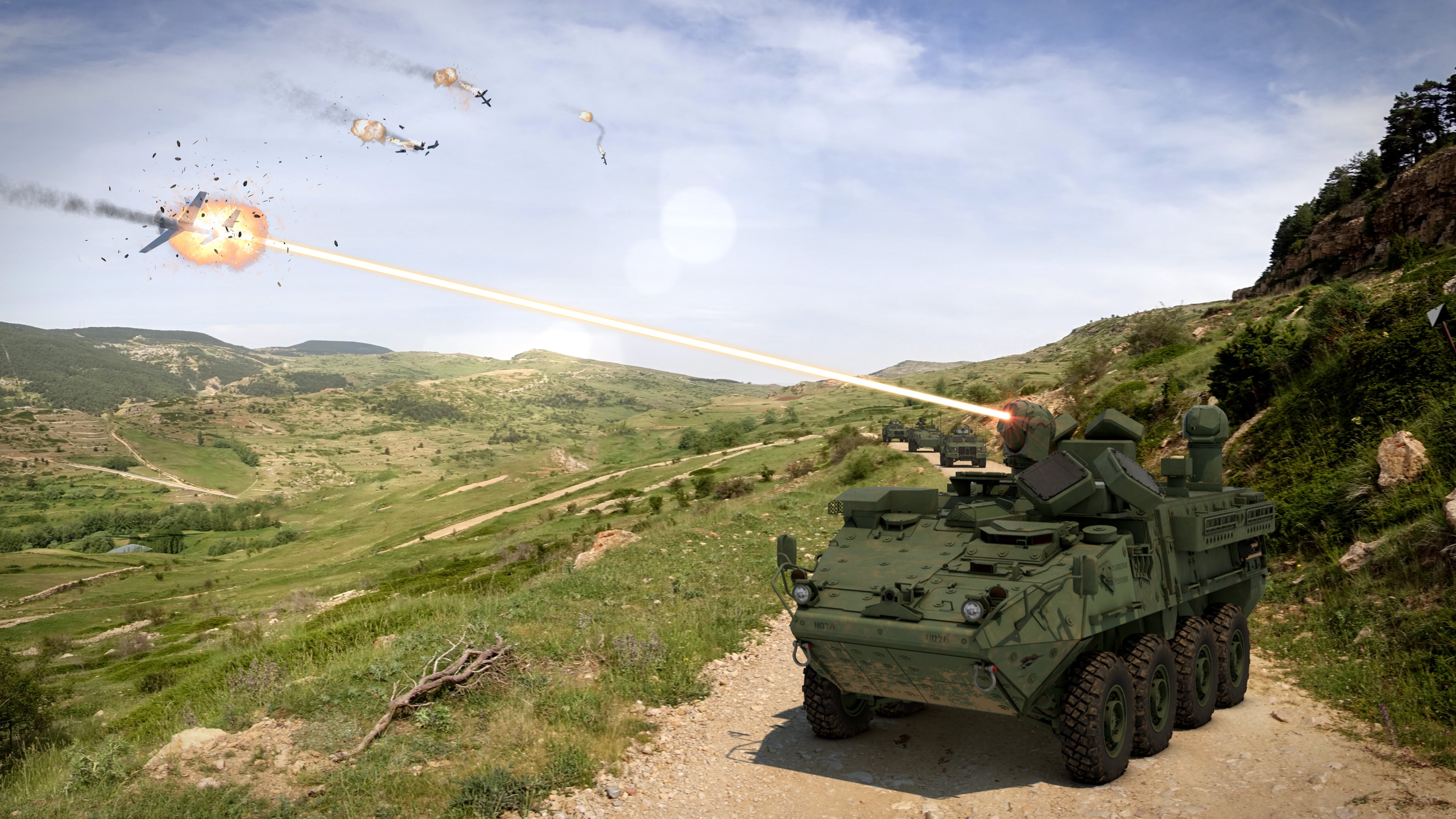HUNTSVILLE, Ala. — The U.S. Army is evaluating additional 50-kilowatt platforms as it seeks to buy short-range air defense laser weapons, even as its initial four prototypes deploy in U.S. Central Command’s area of operations, a service official told Defense News.
Three of the Army’s Directed Energy Maneuver-Short Range Air Defense systems, or DE M-SHORAD, are in Iraq so the service can experiment with the capability in relevant operational environments. The fourth and last prototype will join the other three after getting some work done, said Lt. Gen. Robert Rasch, the service’s Rapid Capabilities and Critical Technologies Office director.
“All four will be downrange supporting our soldiers in the fight today,” he said. “What we’re giving up a little bit is our ability to learn how to integrate that capability into the maneuver force, so we have some work to do on the back end. We’re still capturing data; [the Army Test and Evaluation Command] is downrange with us.”
Additionally, the Army will learn from two other 50-kilowatt laser platforms while the first platoon-set of prototypes are away, he explained.
The Army had originally planned to finish the DE M-SHORAD prototyping effort and transition it to Program Executive Office Missiles and Space in 2023. That office had planned to run a competition for the program of record.
But Rasch’s office decided in 2022 that the directed-energy effort needed more time in development, and planned for a fiscal 2025 transfer instead.
The first prototypes consist of a 50-kilowatt laser from Raytheon on a Stryker combat vehicle. Kord Technologies is the lead integrator.
The two new 50-kilowatt platforms the Army will also evaluate, when they are arrive next year, are one option from Washington state-based nLight and another from Lockheed Martin, Rasch said. The designs are different, he added, so aspects like beam quality, affordability and reliability are also expected to differ.
The Rapid Capabilities and Critical Technologies Office now plans to spend approximately two years to evaluate options before deciding on a way forward.
“We’ve got a few different designs, so we’ll take the data from what we’ve received already, the data that we collect off these other two systems, and combine that together to tee up for the senior leaders, probably late ’26, early ’27 time frame,” Rasch said.
“We want to maintain competition, so it doesn’t really help if we spent a lot of money and almost unfair if we kind of load the deck and we pass off a program decision to, say, PEO Missiles and Space, and it really isn’t a decision; you’ve got one vendor who’s viable,” Rasch said. “Competition makes everybody better.”
While this effort means moving even slower, Rasch did say he “would have loved to have had them all done and be programs of record, but we probably couldn’t have afforded them all anyway. So this gives us a little time to really set up a better competitive space for that next phase affordability.”
With the DE M-SHORAD systems downrange, he added, the Army will learn about lethality and reliability.
“We’ve tested these in labs for decades,” Rasch said. “Now we’re learning some new lessons on what happens when you operationalize these, when you put them in a really ugly, dirty environment that our soldiers put them in.”
The Army is investing about $100 million a year as it prepares to make a recommendation to Army leadership on a strategy, he noted.
Right now, his office is evaluating 10-, 20-, 50- and 300-kilowatt options for a wide variety of threats and missions. The 300-kilowatt laser is designed for the Indirect Fire Protection Capability, which is a system that will use kinetic, laser and high-powered microwave weapons to destroy threats including rockets, artillery, mortars, drones and cruise missiles. The Army is to receive that laser weapon next year.
Not every laser capability we be at the range at the same time, but the service plans to collect data on power, lethality, affordability and reliability across directed-energy weapons through an integrated test campaign to inform senior leaders, Rasch said.
The process will help the service save some money from a testing perspective and, through operational assessments with the user, capture enough data to help the Army pin down the sweet spot for what it will need to counter threats in various environments, he explained.
Jen Judson is an award-winning journalist covering land warfare for Defense News. She has also worked for Politico and Inside Defense. She holds a Master of Science degree in journalism from Boston University and a Bachelor of Arts degree from Kenyon College.





